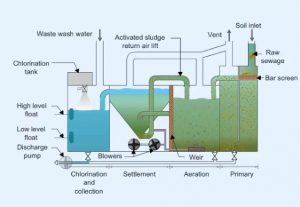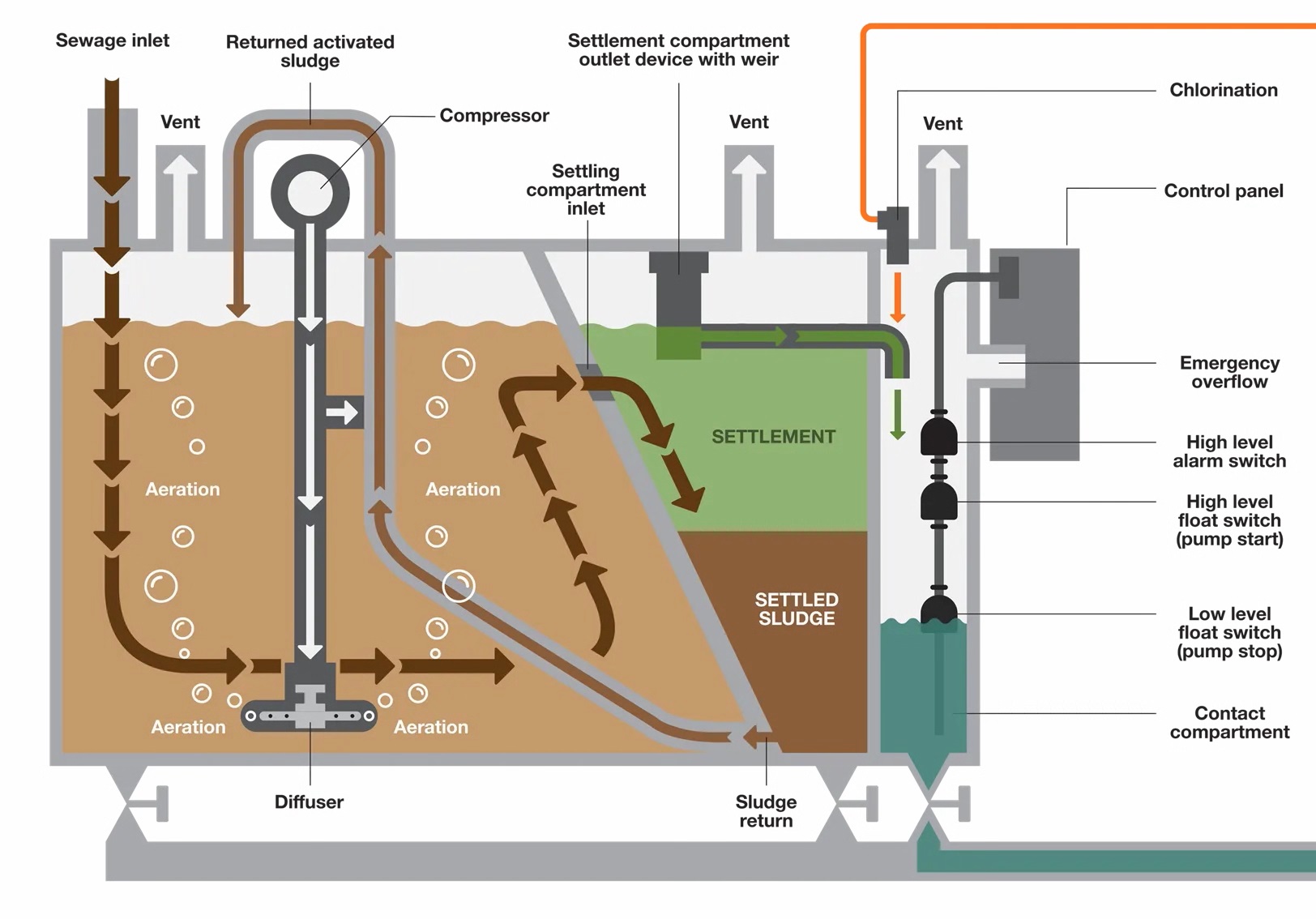The Ship Aero Sewage Treatment Plant (STP) is a pivotal component in managing waste on board, ensuring that ships can treat sewage effectively while adhering to stringent international standards. This system incorporates a myriad of essential components and stages, all working in tandem to process waste efficiently and responsibly.
Components : At the heart of a Ship Aero STP are the settling and aeration tanks. The settling tank is the initial point of entry for sewage, facilitating the separation of solid waste from liquid. The solids settle at the bottom, while the clarified water moves on to the aeration tank. In this second tank, aerobic bacteria play a crucial role, digesting and breaking down organic matter in the sewage. This biological process is vital for reducing the load of pollutants. Moreover, some systems might have additional components such as a disinfection chamber, where the treated water undergoes further cleansing, and a sludge storage chamber for holding the by-products until they can be safely disposed of.

Credit: https://www.marineengineersknowledge.com/2020/09/explaination-on-marpol-annex-iv.html
Treatment Phases: The Aero STP engages in a three-pronged treatment approach – biological, chemical, and physical. The initial mechanical phase ensues, involving processes such as screening, grinding, and filtering, which are pivotal for removing larger solids and particulates from the wastewater. This mechanical treatment facilitates the efficient operation of the subsequent phases by ensuring that larger, potentially disruptive solids are excluded early in the treatment process. The biological phase takes precedence in the aeration tank, where the aerobic bacteria consume organic substances, transforming them into harmless by-products. Following this, in the chemical phase, disinfectants might be introduced to further purify the sewage, eliminating any remaining pathogens or contaminants. Lastly, the physical process is represented by the settling tank, where solids and liquids are distinctly separated, enabling the treatment of each component accordingly.
Capacity: The handling capacity of a STP is highly contingent on the needs of the ship. Smaller vessels may necessitate a system that manages a few cubic meters per day, while larger ships require a system with the capability to handle substantially larger volumes of sewage, ensuring that the waste management needs of the entire ship are met.
Regulations: The design, operation, and maintenance of STPs on ships are governed by international regulations, primarily MARPOL Annex IV. This annex delineates the standards for discharging sewage into the sea, safeguarding marine ecosystems from pollution. Additionally, the International Maritime Organization (IMO) may provide further guidelines and standards, ensuring that ships operate in an environmentally responsible manner, regardless of their geographic location.
Maintenance: Maintaining the STP in optimal condition is paramount. Regular maintenance checks, often conducted monthly, include the inspection of tanks, monitoring bacteria levels, and assessing discharge quality. However, some components might necessitate more frequent attention, ensuring that the entire system functions effectively and adheres to the requisite standards. Regular maintenance not only ensures compliance with regulations but also prolongs the life of the STP and prevents any unforeseen operational issues.
Process flow of a Wärtsilä sewage treatment plant

Main features
- IMO 227(64) & MED certified
- Single power supply input point
- Solids handling centrifugal discharge pump
- Chemical disinfection and de-chlorination
- Automatic control
- Compact design
In conclusion, the Ship Aero Sewage Treatment Plant, by integrating various components and treatment phases, plays an invaluable role in managing sewage on ships. By adhering to international regulations such as MARPOL Annex IV and conducting regular maintenance, ships can ensure that they mitigate environmental impact, thus contributing to the preservation of marine ecosystems.
–


I blog quite often and I really thank you for your information. Your
article has really peaked my interest. I am going to take a note of your site and keep checking
for new details about once per week. I subscribed to your Feed as well.
Howdy! This post couldn’t be written any better! Reading through this
post reminds me of my good old room mate! He always
kept talking about this. I will forward this post to him.
Fairly certain he will have a good read. Thank you for sharing!
Wonderful blog! I found it while browsing on Yahoo News.
Do you have any suggestions on how to get listed in Yahoo News?
I’ve been trying for a while but I never seem to get there!
Thanks
Your means of describing everything in this paragraph is really fastidious, every one be able to effortlessly be aware of it, Thanks a lot.
I’m extremely impressed with your writing skills as well as with the layout on your weblog.
Is this a paid theme or did you modify it yourself?
Either way keep up the nice quality writing, it’s rare to see
a great blog like this one nowadays.
An impressive share! I’ve just forwarded this onto a coworker who has been doing a little homework on this.
And he actually bought me breakfast due to the fact that I discovered it for him…
lol. So let me reword this…. Thank YOU for the meal!!
But yeah, thanks for spending the time to talk about this topic here on your internet site.
Nice post. I learn something totally new and challenging on websites I stumbleupon every day.
It’s always helpful to read through content from other
authors and use a little something from their web sites.
I love what you guys are up too. This sort of clever work and exposure!
Keep up the awesome works guys I’ve incorporated you guys
to blogroll.
Oh my goodness! Impressive article dude!
Thank you, However I am going through troubles with your
RSS. I don’t understand the reason why I can’t join it.
Is there anybody else having similar RSS issues?
Anyone who knows the answer can you kindly respond?
Thanks!!
This drawing will be much simpler to execute due to a easier and fairly frequent shape of horns.
For latest news you have to pay a visit world-wide-web and on world-wide-web I found this web page as a finest web page for most up-to-date updates.